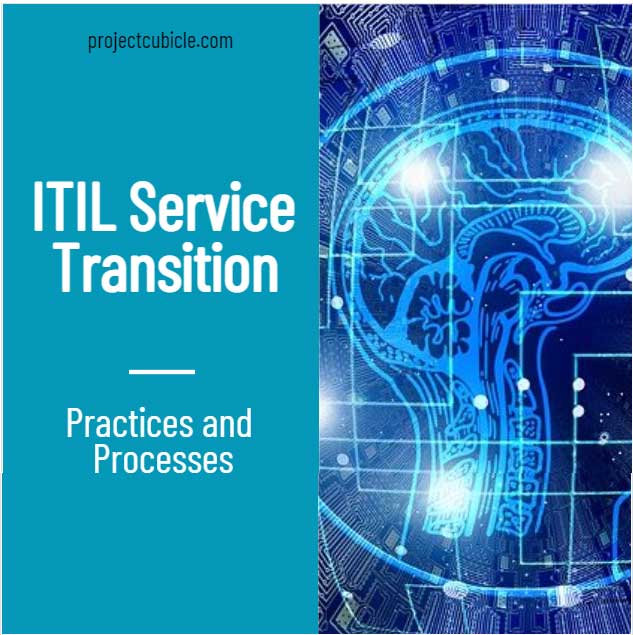Usual Procedures covered in ITIL Service Transition
ITIL Service Transition practices and processes help organizations to ensure continual service improvement and operations. Success in changed services often satisfies business expectations and stakeholder requirements that are documented in the service strategy.
Table of Contents
ITIL Service Transition
Service transition is the thing ensuring that brand-new and adjusted service meets the requirements of customers as well as expectations of business issues. The transition lifecycle stage is the process where the general care of transition sector of companies from one to another state are carried out. This happens while the capabilities of delivery issues of service operation and developments of continuous service are being issued. The focused purpose of the transition stage is administrating and planning the changes in both efficient and effective ways while also managing the risks under control. The transition guidance includes the practices in the management of changes, change evaluation, service asset, configuration management, knowledge management, and deployment management.
What is Service Transition?
As we know, the transition has the meaning of a ‘change’, and the management of these changes is the most significant part of the service transition. Change management is the process that offers the guarantee that changes that will be taken place will be monitored and will take place without any failure. This approach should be organized to make sure that the implementation of process changes is both effective and efficient. This ranges from very basic tasks to advanced tasks.
The Transition Guidance
Together with controlling changes and managing risks in a very effective and efficient method and carrying out knowledge for any type of decision making. The main aim of the transition stage is enough planning and exact implementation of any shift.
The Function of Knowledge and ITIL Service Transition Practices and Processes
The limited volume that can deliver high-quality process and services are based on the capability of those who are responsible for the responding to current situations. In other words, this depends on the option, the understanding of the situations, the outcomes, and advantages. The possibility of delivering quality services and process are based on a large extent on the skills and capabilities of responding to any situations.
This process is connected to their comprehension and analysis of current issues. All of these processes need detailed knowledge about the results and advantages of certain situations. Because of these reasons, the function of the knowledge can be summarized within the areas of responsibilities of service transition;
- Performance expectations
- Character of stakeholders
- Manageable risk levels
- Accessible resources
Therefore, it can be said that the quality of the knowledge relies on the availability, quality, and consistent relevance of all the other simple data. It should not also be forgotten that without any proper and abundant knowledge, the transition can never be worthy and successful.
The main aim of the knowledge management process is to contribute new ideas, new perspectives as well as. What is more, to ensure that these are accessible at the right time in the right place in order to allow better and detailed information. Moreover, to enhance the efficiency by researching the requirement for discovering knowledge.
Another important area in Service transition is release and deployment management. Release and Deployment Management is a pack of several different strategies, techniques, and main points. These include planning a release, building and analyzing the release, planning the deployment, deploying the release, planning pilots, checking the deployment, interacting with change management followed by informing any shifts in the current situation.
The general process of release and deployment is interconnected with, Service Evaluation, Service Validation and Testing, and Change Management. The ultimate release requires an approved notification from the Change Advisory Board (CAB) so that it can go into production. This green signal approves that all stages of release and deployment product were analyzed, monitored, and there is not any failure during these stages so that it is ready for being manufactured. Release and Deployment Management also ensures that customers have adequate skills and knowledge so that they can utilize the service with its full potential easily. It also makes sure that the support staff and operations are aware of the knowledge of service levels and product guarantees. In other words, the Release and Deployment Management department can also be called as the heart of the Service Transition process.
One another topic that should be well explained is service asset and configuration management (SACM). The aim of the SACM process is to ensure that required assets to deliver services are carefully monitored, and reliable and exact information is accessible. This information also includes the details such as the connection between assets and how they are being configured.
What Does Transition Mean?
The transition can be defined as a change. The most significant part of Transition is managing the change. This process is called Change Management.
The process of change management makes sure that the shifts which are being taken place in the company or in the organization are controlled over all the stages so that there will not be any failures or errors. Change management is a completely organized aspect assuring that changes are done in an effective and efficient way. These changes can range from very basic process change to very advanced things such as strategy or policy changes. In other words, change management can be described as the discipline which mentors the way we prepare, support, and equip our individuals to favorably get used to the change so that successful consequences and will be achieved by the organization. It offers a structured perspective for supporting the individuals in the company or organization to transit from their current state of mind to their future and more successful states.
What Do You Think?
Following the proven practices and processes of ITIL Service Transition will help organizations to have new and changed services and applications. So, what do you think? Share your insights with the community through the comments box below.
Further Reading
See Also
Enterprise Architect Job Description

Lorelei Anrei is a PMP, & ITIL certified Project Controls Manager. Ms. Anrei has worked in IT Industry for over 15 years. As a guest speaker, Anrei has shared presentations on Efficient and Effective Meetings. She is sales and marketing manager at LB Training Solutions.











The role of ITIL Service Transition is to move services and service changes into operational use.
I was researching this topic. Thank you for explaining the subject in detail and fluently.